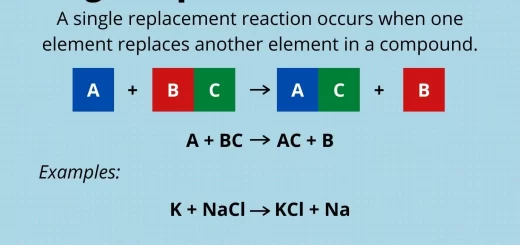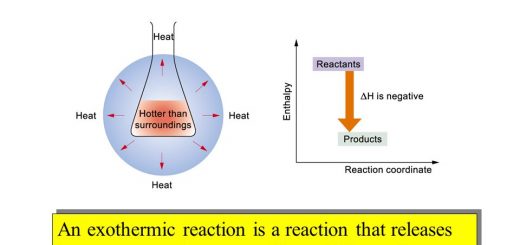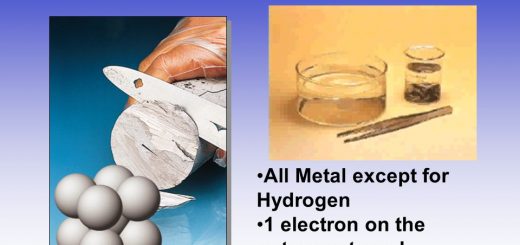Factors affecting the rate of chemical reactions (Pressure, temperature, Catalysts, Light, Nature & Concentration of the reactants)
The reactions of ionic compounds are faster than that of covalent compounds because the ionic compounds are composed mainly of positive & negative ions which are easy to react while the covalent compounds bonds should be broken first before starting the reaction, The divided nickel, not nickel block is used in oil hydrogenation because as the surface area of catalyst increases, the rate of chemical reaction increases.
Factors affecting the rate of chemical reactions
- Nature of the reactants
- The concentration of the reactants
- Reaction temperature
- Pressure
- Catalysts
- Light
Nature of the reactants
This includes two important factors which are the types of bonding in the reactants and surface area exposed to the reaction, Types of bonding in the reactants: Ionic reactants undergo very fast reactions as in the case of the reaction between sodium chloride and silver nitrate, Ions of the reactants combine as soon as their solutions are mixed, on the other hand, Covalent bonded reactants undergo slow reactions as in the case of organic reactions.
The surface area exposed to the reaction plays an important role in the rate of the reaction, For example when two equal masses of zinc metal, one in the form of powder, the other in the form of a black are placed, each separately in a test tube, and an equal volume of dilute hydrochloric acid is added to each, you can observe that the reaction with zinc powder is completely in a shorter time than that with zinc block.
The reaction of sodium chloride solution and silver nitrate solution is an instantaneous reaction while the reaction of soap manufacturing is slow because both sodium chloride and silver nitrate ions react instantaneously as soon as they are mixed, while the reaction of the substances which form the soap is slow because it takes place between unionized organic substances.
In the reaction: 2SO2 + O2 → 2SO3, The rate of reaction decreases extremely when we use the platinum as sheets not a powder because as the surface area of the catalyst increases, the rate of chemical reaction increases.
Concentration of reactants
The larger the number of the reacting molecules (the greater the concentration), the greater the change of collision per unit volume and greater of the reaction, Waage and Guldberg established a law expressing the relation between the velocity of the chemical reaction and the concentration of the reactants, this law is known as the law of mass action.
Law of mass action: At a constant temperature, the rate of the chemical reaction is directly proportional to the product of the multiplication of the reactant concentration, and each is raised to the power of the number of molecules or ions in the balanced chemical equation.
To clarify the law of mass action: by graduated addition of iron (III) chloride solution (faint yellow colour) to ammonium thiocyanate solution (colourless), the colour of the reaction mixture becomes blood red due to the formation of iron (III) thiocyanate, the reaction can be represented by the following equilibrium.
FeCl3 + 3NH4SCN → Fe (SCN)3 + 3NH4Cl
If an excess amount of iron (III) chloride is added, the red colour of the solution increases indicating the formation of more iron (III) thiocyanate when the rate of the backward reaction (r2) equals the forward reaction (r1).
On adding iron III chloride solution to ammonium thiocynate solution, the colour of the reaction mixture becomes red blood and decreases in degree if an excess amount of ammonium chloride is added, the solution turns to red blood colour because the reaction shifts to the forward direction and intensity of colour decreases by adding ammonium chloride solution because the reaction is shifted to the backward direction.
Kc is known as the equilibrium constant of the reaction, the small values of the equilibrium constant (< 1) mean that the concentration of the products is less than the concentration of the reactants which reveal that the reaction does not proceed well towards the formation of the products and that the reversible reaction has an effective role, As an example is the solubility of silver chloride in water.
AgCl → Ag+ + Cl−
The dissolving of silver chloride in water is difficult because Kc value of the reaction is small which indicates that the reversible reaction has an effective role, The high values of equilibrium constant indicate that the reaction proceeds almost to its end, this means that the forward reaction is the predominant reaction, as in the case of the reaction of chloride with hydrogen.
The concentration of water, solid substances and precipitates should not appear in the equilibrium constant equation because their concentrations remain constant whatever their quantities, In general, the concentration of water or solvent is considered as a constant because it doesn’t significantly vary in the reaction, At the same temperature, value of Kc doesn’t change by changing the concentration of reactants and products.
The small values of equilibrium constant (Kc<1) mean that the reversible reaction has an effective role because the result of multiplication of products concentration is less than of reactants, the concentration of water solid substances and precipitates should not appear in the equilibrium constant equations because, at equilibrium, the concentrations remain constant whatever their quantities are.
According to the following equation, H2 + Cl2 → 2 HCl, Kc = 4.4 × 1012, The dissociation of hydrogen chloride to its elements is very difficult because Kc value of the reaction is high which indicates that the forward reaction is the predominant reaction.
Although the reaction of nitrogen gas with hydrogen gas is an exothermic reaction, the reaction does not start until the reactants are heated, until the molecules gain the activation energy required to start the reaction.
The rate of the reactions increases as the quantity of reactants increases because the number of reactants molecules increases, the rate of collision increases so that the rate of chemical reaction increases, Only the collide molecules of very high speed can react because their kinetic energy is high enough to break the bonds within the molecules.
Effect of temperature on the rate of reaction
The effect of temperature on the rate of chemical reaction can be explained in the light of collision theory, this theory assumes that: to have a chemical reaction, molecules of the reactants must collide with each other, only molecules of very high velocity can react, since their kinetic energy is high enough to break the bonds within the molecules, so that the chemical reaction can take place, therefore the molecule must have a minimum amount of energy which is known as activation energy.
Activation energy is the amount of energy that must be gained by a molecule to react at collision with other molecules, Activated molecules are the molecules that have kinetic energy which equals or exceeds the activation energy, the rate of chemical reaction increases as the temperature increases due to the increase in the number of activated molecules.
We can deduce from this theory that a raise in temperature causes an increase in the proportion of activated molecules and consequently an increase in the rate of chemical reaction, the rate of many chemical reactions is doubled by increasing the reaction temperature 10° C.
If we bring a flask filled with nitrogen dioxide gas (reddish-brown colour) and placed it in a cooling mixture, we observe that the intensity of the colour decreases gradually, until this reddish-brown colour disappeared.
When the flask containing the gas is removed from this cooling mixture and kept at room temperature (25°), we found that the reddish-brown colour starts to reappear gradually, this can be explained according to the following equilibrium equation.
2NO2 → N2O4 + heat
We deduce from this experiment that if an exothermic reaction has reached the equilibrium state, The decrease in temperature force the reaction to proceed in the forward direction to liberate heat.
The colour of nitrogen dioxide disappears on cooling because by decreasing the temperature from equilibrium, exothermic reaction forces the reaction to proceed in the forward direction to liberate heat (direction of formation of colourless N2O4.
Effect of pressure
It is worth mentioning that the concentration of a substance in the solution is given in terms of molarity and is expressed by placing the substance between two square brackets [ ], If the reactants or products are in the gaseous state, the concentration is expressed by using their partial pressure, for example, ammonia gas is prepared in industry from its elements according to the following reaction.
N2 + 3H2 → 2 NH3 , Δ H = − 92
Four molecules react to form two molecules, the formation of ammonia gas is accompanied by a decrease in the number of molecules and consequently a reduction in the volume, It was found that by applying pressure and cooling, the rate of ammonia formation increases.
So, by increasing the pressure or cooling on a gaseous reaction under equilibrium, a shift in the direction of reducing the pressure (or the direction in which volume is less) takes place, In this case, the equilibrium constant is expressed by the symbol Kp to indicate that the concentrations of the substances are expressed by the partial pressure.
The equilibrium constant of the above reaction can also be expressed in terms of the molar concentration, Le chatelier formulated a rule that predicted the effect of different factors such as concentration, temperature and pressure on the system under equilibrium.
Le chatelier’s principle: The changes in any of the conditions of a chemical equilibrium such as concentration, pressure or temperature cause shift of the equilibrium in the direction which will oppose this change.
The quantity of water vapour which is prepared from its elements increases as the pressure increases because by increasing the pressure on a gaseous reaction under equilibrium, a shift in the direction in which the number of moles is less takes place.
2H2 + O2 → 2 H2O
The pressure is necessary for manufacturing ammonia gas by Haber’s method but it is not important in manufacturing nitric oxide from its elements because the volume of reactants is greater than that of products in the industry of ammonia, while the industry of nitric oxide gas, the volume of reactants and products are equal.
N2 + 3H2 → 2 NH3
N2 + O2 → 2 NO
Effect of catalysts
The catalyst is a substance that causes a change in the rate of chemical reaction but is chemically unchanged at the end of the reaction, The catalyst does not affect the equilibrium of reversible reactions because it changes the reaction rate without affecting the equilibrium position.
Uses of catalysts:
- Catalysts decrease the activation energy required to accelerate reversible and irreversible reactions at the same time.
- Catalysts are used in more than 90% of the industrial processes such as food and petrochemical industries.
- Catalysts are used in catalytic converters in the car exhaust system.
Catalytic converters in car exhaust systems convert the gaseous combustion products, which cause air pollution into safe products, Catalysts are metals, metal oxides or compounds, Enzymes are high molecular weight proteins produced in living cells, they act as a catalyst for many biological and industrial processes.
Effect of light
Some chemical reactions are affected by light, the photosynthesis is an example in which chlorophyll in plants absorbs light and form carbohydrates in the presence of carbon dioxide and water.
Photographic films contain silver bromide in a gelatinous layer when light falls on such films, silver ions accept electrons from bromide ions are converted into silver metal, Bromine is absorbed in the gelatinous layer, the increase in light intensity is accociated with an increase in the amount of silver formed.
Ag+ + e−→ Ag
The factors affecting the speed of chemical reactions
Chemical bonds, Ionic bonds, Properties & types of covalent bonds
Balanced chemical equations, Law of conservation of matter (mass) & Law of constant ratios



